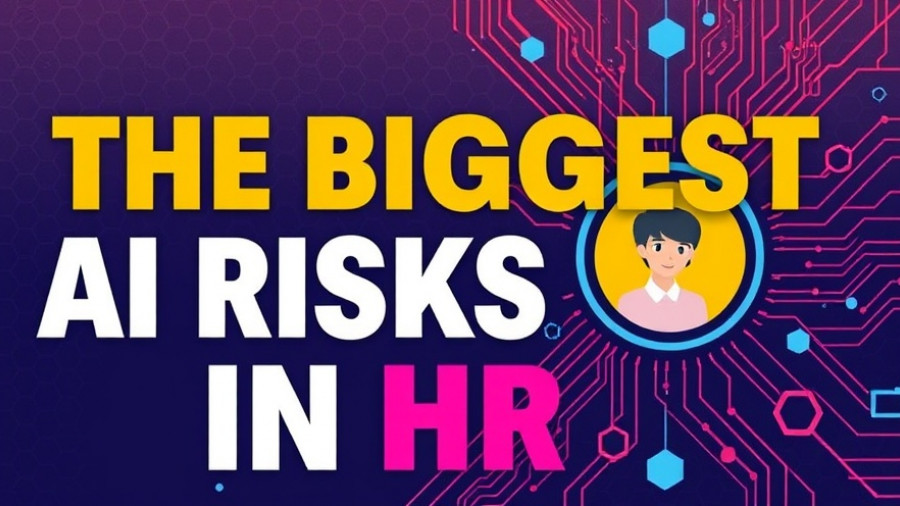
Understanding the Risks: Balancing AI Benefits in HR
As we navigate the exciting frontier of artificial intelligence (AI) in human resources (HR), there’s a growing discourse on the transformative effects this technology holds for recruitment and employee management. Yet, alongside these technological advancements come significant risks that cannot be ignored. In examining the insightful analysis presented in the video, The Biggest AI Risks in HR, we delve deeper into the intricate pitfalls faced by organizations adopting AI in HR.
In The Biggest AI Risks in HR, the discussion dives into the pitfalls of using AI in human resources, exploring key insights that sparked deeper analysis on our end.
Identifying AI's Blind Spots in Recruitment
One of the primary risks associated with AI in HR lies in its implementation in recruitment processes. While AI tools promise unbiased candidate selection, an unsettling trend has emerged: these systems can reinforce existing biases entrenched in historical data. For instance, a tech company discovered its AI recruitment system favored candidates from prestigious universities based solely on past hiring patterns, rather than actual candidate qualifications. This not only undermines diversity initiatives but does not guarantee optimal hiring practices that reflect true merit.
Performance Evaluations: The Illusion of Objectivity
Additionally, performance evaluation systems powered by AI often perpetuate a false sense of objectivity. They frequently overlook crucial 'soft skills'—like mentorship abilities—that are difficult to quantify through traditional metrics. In one instance, a retail company found that employees who excelled in mentorship roles were consistently undervalued, all because the AI model failed to recognize their contributions unless they could be measured in productivity metrics. This reductive view of employee value can have severe implications for culture and retention.
Data Privacy: A Growing Concern
AI systems also usher in new vulnerabilities regarding data privacy. HR departments handle a wealth of sensitive personal information, which creates risk when handled by AI. Even when data is anonymized, the potential for de-anonymization exists when AI combines various data sets. This reality raises ethical questions about the safeguarding of employee data that HR must address meticulously.
Surveillance: Balancing Monitoring with Trust
The capability of AI to monitor extensive employee activity—ranging from keyboard strokes to facial expressions—poses another troubling challenge. Companies that have rolled out invasive monitoring systems often face backlash, with talent exodus following suit. The need for scrutiny in the workplace must be balanced with fostering a trusting environment, which is vital for employee morale and retention.
The Skills Gap: Educating HR Teams
As organizations rush to implement AI, another pressing issue is the skills gap within HR teams. Many teams deploy AI without a firm understanding of how it operates, leading to governance challenges. Investing in AI literacy for HR professionals can empower organizations to harness technology effectively, moving towards innovative HR practices that are thoughtful and ethical.
Creating Ethical Frameworks: A Path Forward
To mitigate these risks, establishing rigorous ethical guidelines surrounding AI usage in HR is essential. This includes implementing bias testing, maintaining human oversight, and creating AI Ethics Committees to review and monitor AI applications related to HR. Successful implementations acknowledge that AI should augment, not replace, human judgment. A prime example is seen in a financial services firm that created an AI Ethics Committee specifically to test tools for bias while ensuring transparent communication with employees.
In conclusion, as organizations integrate AI into their HR frameworks, they stand at a crossroads where the potential for innovation meets the necessity for caution. AI should make HR processes more efficient and human-centric, aligning technological capabilities with ethical responsibilities. Ultimately, navigating these challenges allows businesses not only to thrive but also to create a workplace that values each employee's contribution while ensuring compliance with evolving legal and ethical standards.
 Add Row
Add Row  Add
Add 




Write A Comment